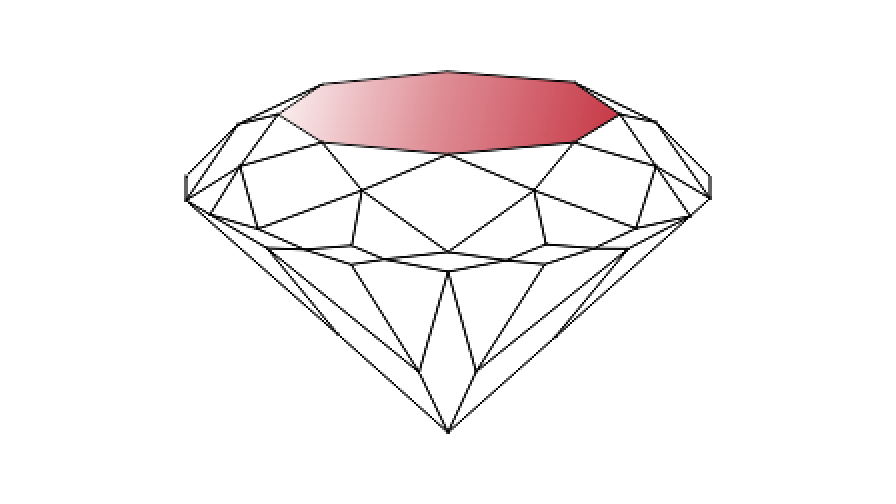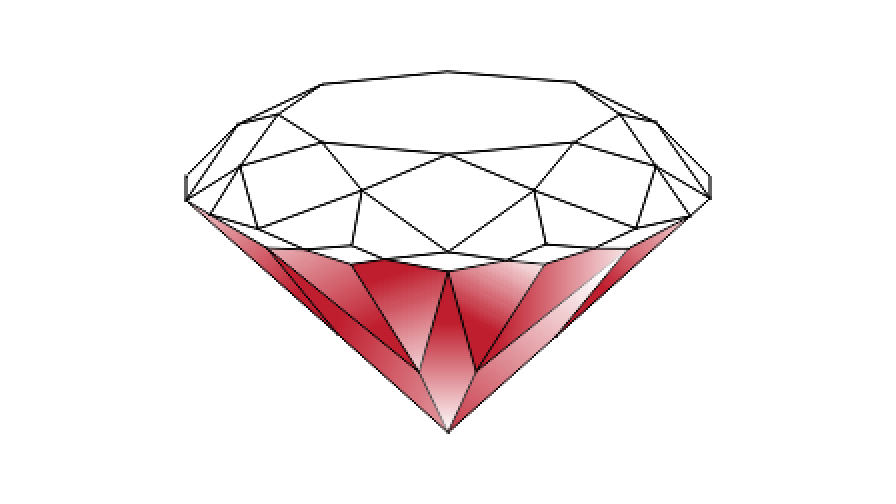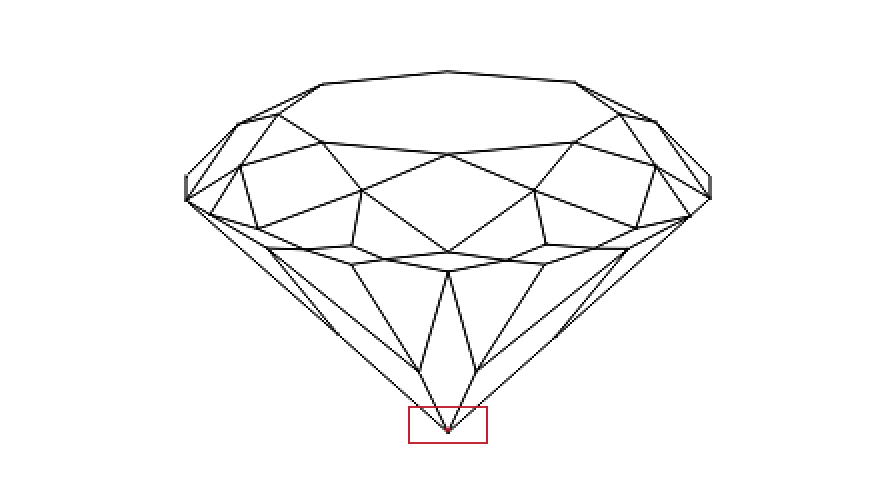To get an adequate knowledge about a diamond, it is necessary to understand the basic terminology of its structure. The facets, known as the crown, culet, table, girdle and pavilion, are set with precise, mathematical magnitude to maximize a diamond's fire, life and brilliance.

Table: The table is the flat facet of a diamond and is octagonal in shape. It can also be referred as the largest facet on a cut diamond
Crown: The crown refers to the top part of the diamond extending upwards from the girdle to the table.
Girdle: The widest edge of the diamond where the crown ends and meets the pavilion is called girdle.
Pavilion: The pavilion is that portion of a diamond that that begins at the girdle and tapers downwards to meet the culet. It is the bottom part of the diamond.
Culet: Culet is the flat tiny facet at the bottom or tip of the diamond. It is the diamond's smallest facet.
Depth: Depth of a diamond is referred to the total length of a diamond, which is measured from the tip of the culet to the table.
Diameter: It refers to the width of a polished diamond from one side of the girdle to another.
Diamond Polish
Polish refers to the degree of smoothness of each facet of a diamond. It is the diamond cutters art in unleashing the color and beauty within diamond. A quality polish eliminates the unwanted material on the stone and enhances the intensity of light reflected from a diamond.
Polish Grade Table
Excellent/Ideal
Diamonds with ideal or excellent polish can enhance overall appearance of the stone. Excellent polish in a diamond means that there are no polish defects (i.e. pits, chips, polish lines or scratches) visible at all under 10x magnification or to the naked eye.
Very Good
Diamonds with very good polish can improve overall appearance of the stone. Very Good polish in a diamond means that there are only faint polish lines that can be noticed under 10x magnification with extreme difficulty but are not visible to the naked eye.
Good
Diamonds with good polish improve the look of the stone. Good polish in a diamond means that there are small transparent polish lines that can be noticed under 10x magnification with difficulty, but remain invisible to the naked eye.
Fair
Diamonds with fair polish are less brilliant and are less desirable. Fair polish in a diamond means that defects can be noticed under 10x magnification and can also be visible to the naked eye.
Poor
Diamonds with poor polish look dull and affect the overall appearance of the stone. Poor polish in a diamond means that defects can be noticed under 10x magnification and are even clearly visible to the naked eye.
Diamond Symmetry
The Symmetry refers to how precise or aligned the numerous facets of a diamond are. The symmetry of a diamond affects its brilliance and value. Excellent symmetry of a well-cut and well-proportioned diamond enhances the beauty and brilliance of a diamond
Symmetry Grade Table
Excellent/Ideal
An excellent symmetry maintained in a diamond enhances its exquisiteness and brilliance. Diamonds with excellent symmetry have no alignment issues at all and defects of any kind are not visible even under 10x magnification.
Very Good
A very good symmetry maintained in the diamond enhances its splendor and brilliance. Diamonds with very good symmetry have no defects as such and flaws of any kind are extremely difficult to see even under 10x magnification.
Good
A good symmetry maintained in the diamond enhances its beauty and brilliance. Diamonds with good symmetry have minor issues, which are difficult to detect even under 10x magnification.
Fair
A fair symmetry maintained in the diamond allows the light to leak from the stone and makes it appear less lustrous. Diamonds with fair symmetry have flaws that can be detected under 10x magnification and may also be visible to the naked eye.
Poor
A poor symmetry maintained in the diamond misdirects the light entering it and make it appear dull. Diamonds with poor symmetry have flaws that can be easily detected under 10x magnification and are clearly visible to the naked eye.
Diamond Fluorescence
The fluorescence in a diamond refers to a kind of illumination that it demonstrates when exposed to ultraviolet radiation. It can also be described as the propensity of a diamond to produce a soft blue colored shine when it is subjected to ultraviolet rays. There are two factors that should be observed when looking for diamond fluorescence. First being the color of the fluorescence and second is the strength of fluorescence. Though it is believed that fluorescence can augment or diminish the beauty of a diamond, but overall it should not be a key factor in the purchase of a diamond.
Fluorescence Grade Table
None/Negligible
No fluorescence is found hence there is no influence on color of a diamond.
Faint
Weak fluorescence is observed and hence it does not have much significance on the color of a diamond.
Medium
Average fluorescence is observed which has a minute influence on color of the diamond.
Strong
There is a strong influence observed which has a significant influence on the color of a diamond.





